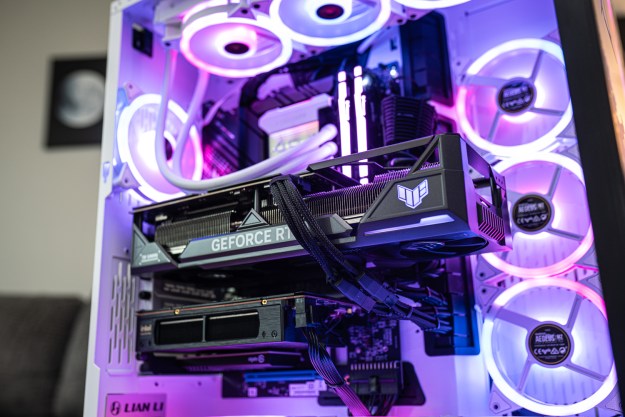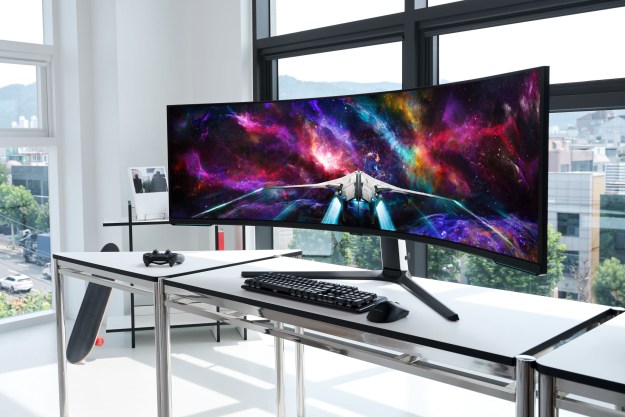
Intel has released the world’s densest solid-state drive, but you’ll never install it in your desktop PC. Instead, it’s a long device resembling a 12-inch ruler that’s designed to bring 32TB of speedy storage to data centers. It joins two other “ruler” SSDs in the company’s DC P4500 Series.
The DC P4500 Series is based on Intel’s 3D NAND technology, which stacks memory cells like skyscrapers rather than spreading them out horizontally as in standard SSDs. This is a better design because storage capacity isn’t limited to the SSD’s physical horizontal space. The technology — Intel calls it Optane — is also supposedly faster because data travels up and down via “elevators” rather than seeking out destinations using “streets.”
But as the “ruler” description implies, the DC P4500 Series doesn’t use your typical “cartridge” SSD form factor. The SSDs measure 12 inches long, 1.5 inches wide, and 0.33 inches thick. They’re designed to fit in a 1U server slot measuring 1.75 inches high and 19 inches long that is capable of packing 32 rulers SSDs side by side. They also require half the airflow, reducing cooling costs.
“A new form factor itself isn’t all that exciting, typically,” says Intel’s Wayne Allen. “But because [the ruler] impacts everything about server design and helps increase performance and reach new levels of density, it’s a big deal. We’re redesigning the data center with this — that’s the most fun part of it for me.”
The idea is to design ruler-based servers so that fresh air can hit the processor, which not only enables processors with higher speeds at the same cooling cost but improves the data center’s overall cooling efficiency. That design starts with the massive amounts of storage used by each storage. With these ruler SSDs, Intel says it’s “delivered a 10× power reduction and a 20× space improvement.”
Currently, data centers mostly rely on hard drives. They’re cheaper than SSDs and provide more storage space per dollar, but rely on moving mechanical parts — picture a turntable for your vinyl records — whereas SSDs do not. That means hard drives are less reliable and generate more heat, thus they require high amounts of air conditioning to keep them cool, unlike SSDs.
Intel’s 32TB SSD doesn’t appear to be available for data centers just yet, but the 4TB and 8TB models can give us an indication of its performance. Both connect to a PCI Express NVMe 3.1 ×4 interface enabling sequential read speeds of up to 3,300MB per second and sequential write speeds of up to 1,900MB per second. They use a mere 18 watts of power while writing, 13 watts while reading and four watts while remaining idle.
Intel’s upcoming 32TB SSD will consist of 64 layers, while the current 8TB and 4TB only have 32. All three are based on Triple Level Cell NAND, meaning each memory cell can store three bits of data. The “ruler” form factor is actually based on a new industry specification called EDSFF that you can read about right here.
Editors' Recommendations
- AMD might deal a huge blow to Intel with new 3D V-Cache CPUs
- This SSD looks like a graphics card, and it comes with 32TB of storage


